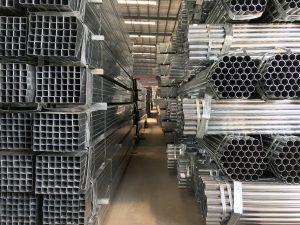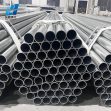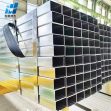How often should pipes be inspected for signs of corrosion
Pipes are critical components of many industrial processes and systems, and corrosion is a common problem that can lead to leaks, blockages, and other issues that can be costly to fix. Regular inspection is crucial to detect signs of corrosion early and prevent serious damage to rectangular hollow section and associated equipment. The frequency of inspections depends on several factors, including the type of pipes, the environment in which they are used, and the nature of the substances they transport.

In general, pipes should be inspected for signs of corrosion at least once a year. However, the frequency of inspections may need to be increased in certain situations, such as when the pipes are exposed to highly corrosive substances or environments. For example, pipes used in the oil and gas industry or chemical processing plants may require more frequent inspections due to the harsh conditions in which they operate.
The type of pipes used also affects the frequency of inspections. For example, pipes made of materials that are highly resistant to corrosion, such as stainless steel or copper, may require less frequent inspections than structural steel pipes made of materials that are more susceptible to corrosion, such as carbon steel or cast iron. Similarly, pipes that are coated with protective materials, such as epoxy or polyethylene, may require less frequent inspections than uncoated pipes.
The age of the pipes is another factor to consider when determining the frequency of inspections. Older pipes may be more susceptible to corrosion than newer pipes, and therefore may require more frequent inspections. Similarly, pipes that have previously been repaired or replaced due to corrosion may require more frequent inspections to ensure that the problem does not recur.
In addition to regular inspections of square tube, it is important to monitor pipes for signs of corrosion on an ongoing basis. This can be done using techniques such as ultrasonic testing, magnetic flux leakage, or visual inspection. Monitoring can help detect corrosion early, allowing for prompt repairs and preventing serious damage to the pipes and associated equipment.
In conclusion, pipes should be inspected for signs of corrosion at least once a year, with the frequency of inspections adjusted based on factors such as the type of pipes, the environment in which they are used, and the nature of the substances they transport. Regular inspections and monitoring can help detect corrosion early, preventing serious damage to Hot Rolled Round Steel Pipe and associated equipment and reducing the risk of costly repairs and downtime.
Tel: +86 18202256900 Email: steel@fwssteel.com










